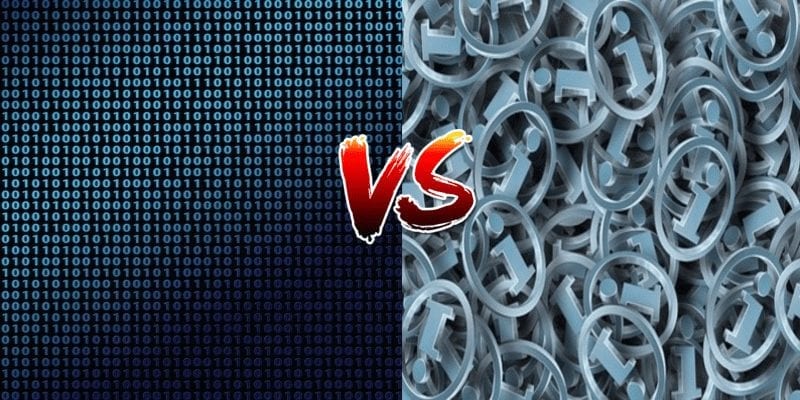Data vs. Information; What’s the Difference?


You may recognize the saying “data is not information” by Clifford Stoll. In the world of BI and analytics, Stoll’s words mean that data alone is not particularly useful. It is only when we add context to it that it can be translated into actionable information. How does one go from raw data to knowledge? The answer is in analytics dashboards and visualizations, which go beyond graphs and bar charts.
Data becomes information
The number and variety of data sources organizations want to analyze – from applications, social, and machines, is growing every day. The problem comes when one pulls in all this data, because it lacks context and meaning. To prepare it for analysis, the data must be cleaned. In other words, data that is unnecessary needs to be eliminated.
Once it is cleaned up just enough to where users can share it, it becomes information. Information is the absolute minimum one should offer a user in a BI dashboard. This means that if a user is familiar with your business, they would find it valuable. But in this scenario, the data only has value if the user knows how to interpret it. They still need to do work in order to make sense of the information. The danger in providing only information is that users can make decisions based on incorrect interpretations because the information is not in context.
Information becomes Knowledge
A well-designed dashboard guides users to the correct interpretations of the data. One should never show a number without providing an underlying trend. Additionally, a trend always needs to be accompanied by previous trends. Included trend-lines should always be joined by correlating why they are taking place.
To offer users knowledge means that everything has been thought through and it’s not just data hanging in space. But it also goes beyond simply offering multiple visualizations to show trends. The types of visualizations one must use to represent data should also change based on the type and the audience viewing them. Each analytics user has a different role and therefore a different frame of reference. It’s the dashboard designer’s job to find out what users want to see.
Knowledge informs decisions
A well-designed dashboard tells the complete story, but this can be difficult with limited real estate on small screens. That’s where “small multiples” come in – to create comparisons that suit users. One can also show the relationship between types of information using “parallel coordinate” charts. These charts provide context by displaying the volume of data flowing through the various data points.
As all of these examples illustrate, the best way for one to make an informed decision is to have access to information. Only then does an organization have the tools to turn raw data into valuable knowledge.



















